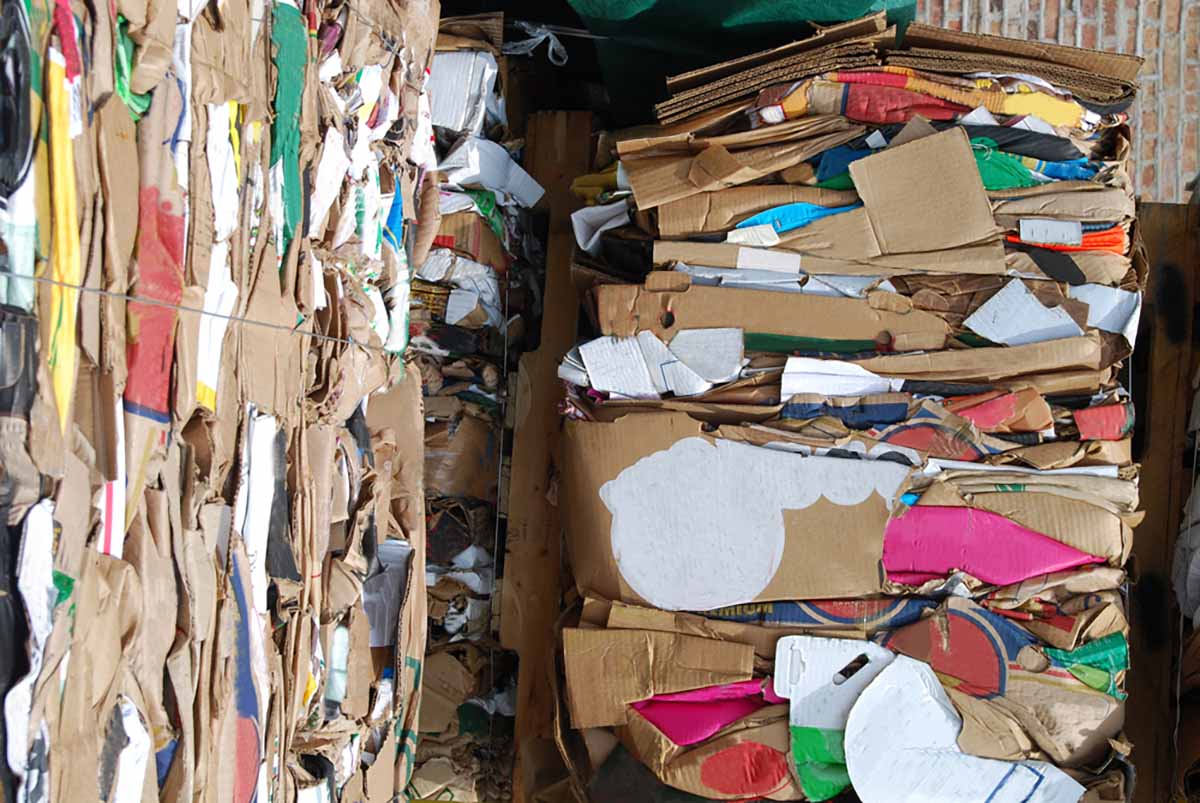
A senior economist at recovered paper research firm RISI recently spoke on the forces driving the OCC market. | Quang Ho/Shutterstock
The end of 2020 was marked by promising recovered fiber prices. An analyst says that’s due to strong domestic and international demand, despite China’s move to cease buying.
Hannah Zhao, a senior economist at recovered paper research firm RISI, recently spoke on the forces driving the OCC market, which she said has been “full of changes and surprises in the past few years.”
The year was dominated by the COVID-19 pandemic, which disrupted both supply and demand for recovered fiber. But 2020 was also notable for potentially being the final year for exporting OCC to China, which has officially banned imports of the material.
Zhao discussed recent growth in domestic OCC demand and explained how the U.S. recovered fiber market will continue to be connected with China, despite China’s exit from the export market. Zhao spoke during the recovered fiber portion of Recycling Markets 2021, a virtual presentation put on by the Northeast Recycling Council (NERC).
COVID-19 drives early-year market shifts
The stage for the 2020 market was set by the import policies enacted in key overseas markets in recent years: China’s restrictions in 2017 and 2018, followed by similar moves in Indonesia, India and other major fiber export markets.
“All of those regulations affected U.S. recovered paper exports significantly,” Zhao said. The U.S. OCC price declined sharply in 2018, she said, and ultimately fell to its lowest level in two decades at the end of 2019.
Then came another disrupting factor, the COVID-19 pandemic. Its early impacts included major supply disruptions for recovered commodities, particularly OCC, largely because of the slowdown in commercial generation following business closures.
That supply shortage coincided with growing demand from end markets. Paper mills were racing to meet the demand for paper packaging products, which were needed to meet the sudden influx of e-commerce, panic buying of grocery store products, to-go food sales and other pandemic-driven consumer trends.
“The strong demand for containerboard eventually transferred to strong demand for OCC,” Zhao said.
Those dynamics drove a sharp increase in OCC prices during the spring. When states began loosening restrictions around May, however, OCC supply recovered and the supply-demand imbalance began to subside, Zhao said. OCC prices fell in June and July.
Paper companies prepare for China’s exit
As the COVID-19 tumult subsided, the China factor came back as the dominant force in OCC markets. The country had previously announced that it would enact an all-encompassing ban on recovered materials, including OCC, in 2021. That led to a short-term increase in shipments to China, Zhao said.
“Chinese import demand started to pick up, as Chinese paper companies basically took their last chance to import U.S. OCC before China’s import ban,” Zhao said.
As the 2020 export numbers show, U.S. recovered fiber exports spiked in late summer before slowing at the end of the year. The Chinese demand helped stabilize and even increase the OCC price during August and September, Zhao said.
Zhao said many observers thought the drop in Chinese demand late in the year would coincide with a notable decrease in OCC prices. But even when exports to China fell to their lowest volumes on record in December, OCC prices remained stable. Several factors played into this price stability.
“For one thing, U.S. paper mills … started to run at high speeds again to get prepared for the upcoming holiday season,” Zhao said.
International markets played into it as well, Zhao said. South and Southeast Asia had lower demand earlier in the year, largely because of logistics: Container shortages in the shipping industry and local collection disruptions because of COVID-19 meant some mills in South and Southeast Asia slowed or idled due to a lack of feedstock.
But export figures show several countries steadily increased imports as the year progressed. In July 2020, India brought in 42,000 short tons of U.S. OCC; in December, the country imported 170,000 short tons. Vietnam’s monthly OCC imports increased from 92,000 short tons in July to 208,000 short tons in December.
“They started to increase their imports of recovered paper in the fall after being very, very quiet for most of the spring and summer,” Zhao said. “The strong demand from both domestic paper mills and also from non-China Asia helped hold the U.S. OCC market even when China imports went away completely.”
As the year came to a close and 2021 began, analysts anticipated the surge in OCC supply from the holiday shopping season could pull down prices. But rather than decline, the U.S. OCC price increased in December and again in January, Zhao noted. She attributed the price strength to ongoing demand both domestically and in Asia.
“U.S. mills continue to run quickly, with no clear signs of slowing down,” Zhao said. And the South and Southeast Asian markets were “extremely hungry for fiber, and they have been waiting to accept a big price increase as long as they can get the fiber.”
As for China, although the country will no longer import recovered fiber, Zhao noted that the OCC going to India and Southeast Asia in some cases ultimately enters China in pulp form.
“So although China stopped recovered paper imports completely at the end of last year, its impacts on the U.S. recovered paper market will not go away,” she said.
More stories about fiber
- FV Recycling acquires Mid America Paper Recycling
- Coated paper group plans for EPR rollouts
- Box demand slump signals strain in US economy



